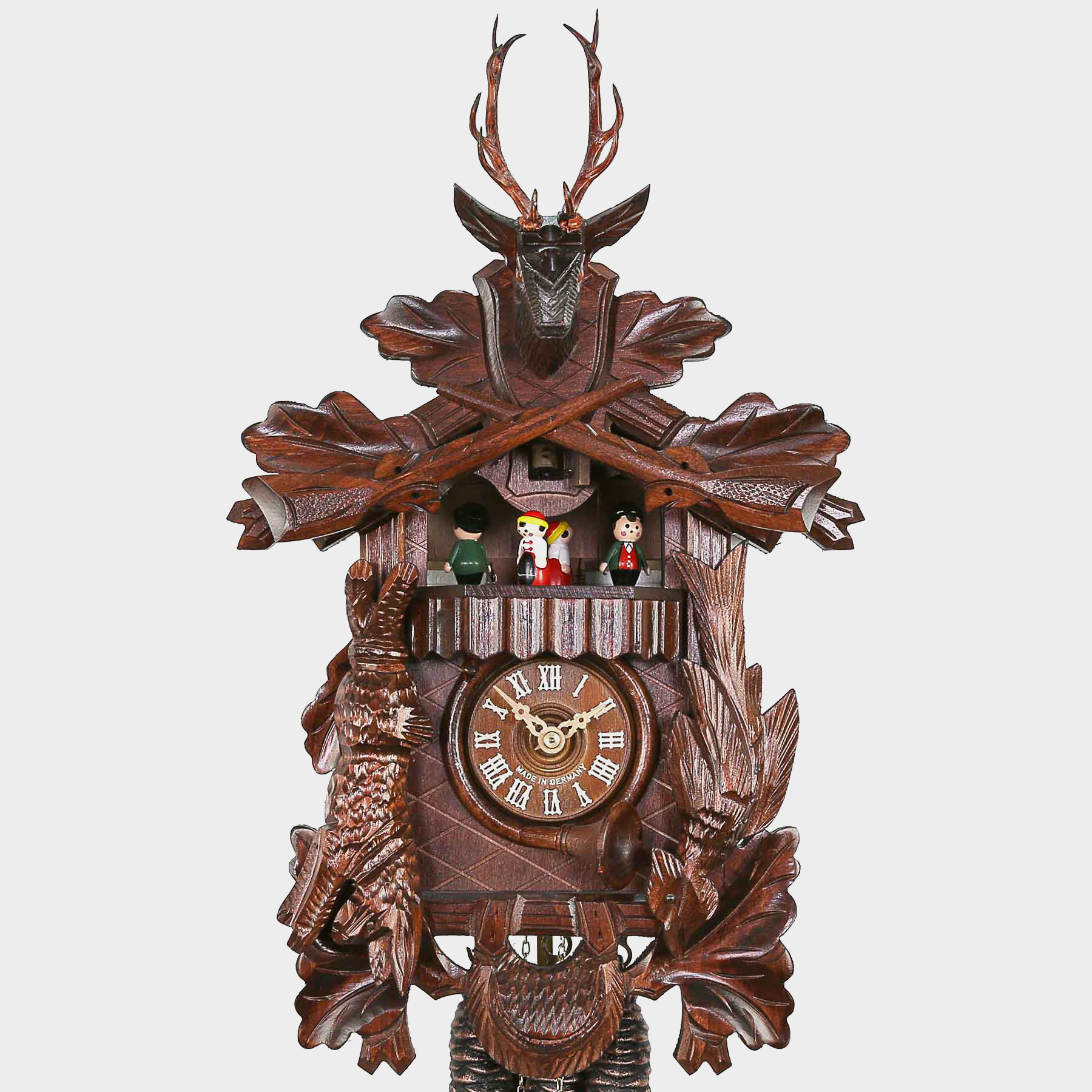
The original black steel hands are elegantly pierced and finished. The whole of the front is behind glass the door opens to reveal a plain wooden surround to the white painted convex metal dial.

The top is centred by a door revealing a hand-painted cuckoo with articulated wings, tail and beak. The attractive Biedermeier-styled rosewood case is inlaid with scrolling brasswork and pewter acanthus leaves.

Unusually, this wall cuckoo clock has a spring-wound fusee movement. It was more common for Black Forest wall clocks to have weight-driven movements and the shelf (bracket) clocks to utilise the fusee movements introduced by Johann-Baptiste Beha to Black Forest clocks in the 1850s. In addition to the world-famous cuckoo clock, these include handmade wristwatches and designer clocks, grandfather clocks, and jewellery watches in all styles.A very rare model of antique cuckoo clock by Johann-Baptiste Beha, dating to the 1870s. Today, clock production in the Black Forest is mainly a specialised, niche industry. In the last decades of the 20th century, however, most of the Black Forest clock factories were forced to close, with production shifting to the Far East. At the beginning of the 20th century, Junghans in Schramberg was the largest clock factory in the world. In the mid-19th century, overproduction led to a drastic drop in prices. After 1850, the first clock factories were developed. In 1850, the first clockmaking school was opened in Furtwangen to better train apprentices. About 600,000 wooden clocks were produced each year. Georgen and Lenzkirch, employing some 5,000 people. In around 1840, there were about 1,000 clockmaker’s workshops in the Black Forest between St. The first Black Forest wooden clocks were most likely made in the latter half of the 17th century. In 1840, there were 1,000 clockmakers in the Black Forest To the cuckoo with the clock : Experience over 1,000 clocks and everything about the cuckoo clock in the German Clock Museum! Peter, for example, owned a large clock shop in London's East Street, and the Kleysers from Rötenbach ran an established shop in the High Street. Provided their businesses were doing well, many traders set up clock shops abroad. In addition, the clock workshops between Triberg in the central Black Forest and Lenzkirch in the southern Black Forest relied on a division of labour and extremely effective distribution, as special routes had already been opened by the glassworks industry.Įngland was the top market, with mid-19th century London home to more than 200 Black Forest clockmakers. They were wooden, as the construction of metal clocks was a prerogative of the guilds. The clocks’ popularity was due to their low price. Upon arrival, Black Forest clock dealers then set out on foot. Widt would send the clocks to almost every country in the world. In the 19th century, a wagon loaded with clocks would leave stockyards in Triberg, Furtwangen, Neustadt, and Lenzkirch every week, going to Strasbourg. "By the mid-18th century, efficient trading companies had already formed, which then sold these clocks all over the world," says Graf.

The beginnings of Black Forest clock production likely date back to the second half of the 17th century.Outside of England and France, America and Russia were the main sales areas. “In the first half of the 19th century, one in three clocks around the world came from the Black Forest,” explains Johannes Graf, a research assistant at the German Clock Museum in Furtwangen.


 0 kommentar(er)
0 kommentar(er)
